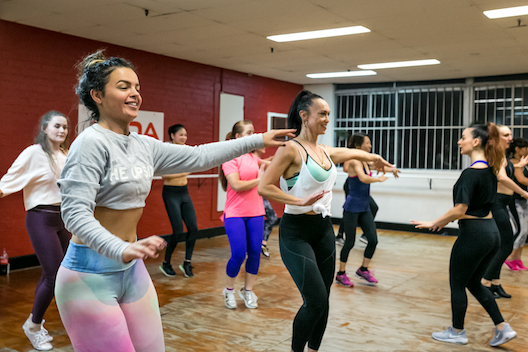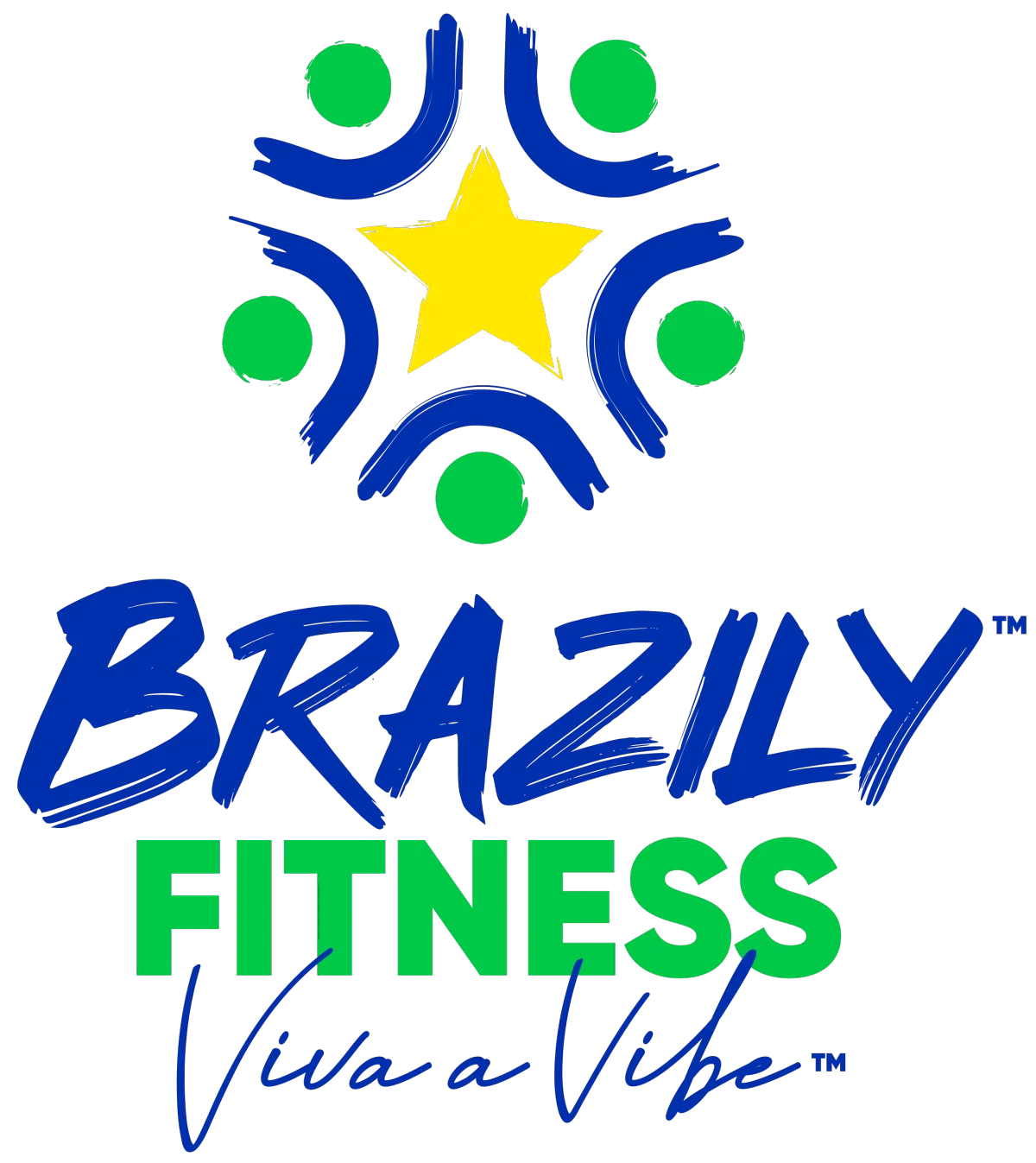
Samba 101: Exploring the Signature Moves and Rhythms in Brazilian Dance Fitness
Samba 101: Exploring the Signature Moves and Rhythms in Brazilian Dance Fitness
Samba, one of the most popular music and dance styles to emerge from Brazil, has a rich history and cultural significance that spans several centuries. This energetic dance fitness form evolved in Rio de Janeiro by the early 20th century and grew to become a vibrant part of Brazilian culture. In this blog post, we will delve into the origins, cultural significance, and evolution of Samba dance fitness, as well as explore its signature moves and rhythms. History and Cultural Significance Samba's roots can be traced back to West African people who were brought to Brazil as enslaved individuals, starting in the 16th century.
These African influences, combined with elements of European music and dance, laid the foundation for the creation of Samba. Initially, the dance style may have originated in Bahia, but it flourished in Rio de Janeiro at the end of the 19th century when it became the new capital of the Portuguese colony. Samba's origins in Africa can be attributed to the West African slave trade and African religious traditions. The term "samba" originally referred to a variety of Latin duet dances with origins in the Congo and Angola. Over time, it became a distinct genre and dance style that embraced both African and Brazilian cultural elements.
Signature Moves:
Samba dance fitness is characterized by its vibrant and energetic movements, reflecting the celebratory and lively spirit of Brazil. Let's explore some of the popular signature moves in Samba dance fitness:
Samba Step: This move involves a quick side-to-side movement of the hips while maintaining a strong and stable upper body posture. The Samba Step is characterized by its syncopated rhythm and requires precise footwork to execute it with grace and style.
Samba No Pe: This move focuses on showcasing the dancer's individual style and personality. It involves intricate footwork, with quick and precise steps, as well as fluid and dynamic hip movements. The Samba No Pé allows dancers to express their creativity while staying connected to the pulsating beat of the music.
Carnival Style: Inspired by the vibrant and festive atmosphere of Brazilian Carnival, this move incorporates high-energy jumps, spins, and fast-paced footwork. The Carnival Style is all about letting loose, embracing the joyous spirit of the dance, and captivating the audience with exuberant movements.
Body Rolls: This move focuses on isolating different parts of the body, particularly the torso and hips, to create fluid and controlled movements. Body Rolls require a strong core and precise muscle control. By smoothly rolling the body, dancers can add sensuality and sophistication to their Samba routines.
Rhythms and Music:
Let's dive into the pulsating rhythms and vibrant music genres that define the world of Samba dance fitness. Samba music is renowned for its lively beats, irresistibly urging everyone to move to its infectious rhythm. At the heart of Samba dance fitness lies the "Samba Batucada" rhythm, a fast-paced sensation driven by percussion instruments like drums and tambourines. Alongside this, Samba dance fitness embraces other captivating music genres such as Bossa Nova, Pagode, and Samba Reggae.
The Rhythms Unveiled:
Samba Batucada: This fast-paced rhythm is the heartbeat of Samba dance fitness. With its lively tempo and powerful percussion, it sets the stage for an energetic and exhilarating workout experience.
Bossa Nova: Originating in the late 1950s, Bossa Nova is known for its smooth, melodic rhythms. It offers a contrast to the high-energy Samba Batucada, adding a touch of elegance and grace to the dance fitness routine.
Pagode: A lively and upbeat genre that emerged in the 1970s, Pagode injects infectious energy into Samba dance fitness sessions. Its dynamic beats and vibrant melodies create an atmosphere of celebration and joy.
Samba Reggae: Combining the traditional rhythms of Samba with the laid-back vibes of Reggae music, Samba Reggae offers a unique fusion of sounds and styles. It adds a refreshing twist to the dance fitness routine, keeping participants engaged and energized.
Cultural Influences and Global Impact:
Samba dance fitness has transcended its Brazilian roots to become a global sensation. Its fusion with other dance forms, such as Zumba, has created a dynamic and inclusive fitness experience that appeals to people from all walks of life. The physical benefits are undeniable, offering a full-body workout that enhances cardiovascular endurance, flexibility, and coordination.
Beyond its physical advantages, Samba dance fitness provides a cultural immersion into the vibrant spirit of Brazil. The infectious rhythms, lively movements, and vibrant costumes offer a glimpse into the rich cultural heritage of Samba. It's an exciting and engaging activity that breaks down language and cultural barriers, bringing people together in a celebration of movement and music.
Embrace the Vibrancy of Samba Dance Fitness:
Originating from Brazil, Samba dance fitness is a rhythmic and expressive dance style that weaves together elements of African and European cultures. Its signature moves and infectious rhythms captivate dancers and audiences alike, fostering a sense of joy and celebration.
By exploring the history, rhythms, and cultural impact of Samba, we gain a deeper appreciation for this vibrant dance form. Whether you're seeking a fun way to stay active or a cultural experience like no other, Samba dance fitness offers the perfect blend of excitement and rhythm.
So, slip on your dancing shoes and let the pulsating beats guide you on an exhilarating journey through the vibrant world of Samba dance fitness!
Brazily Fitness Blog

Samba 101: Exploring the Signature Moves and Rhythms in Brazilian Dance Fitness
Samba 101: Exploring the Signature Moves and Rhythms in Brazilian Dance Fitness
Samba, one of the most popular music and dance styles to emerge from Brazil, has a rich history and cultural significance that spans several centuries. This energetic dance fitness form evolved in Rio de Janeiro by the early 20th century and grew to become a vibrant part of Brazilian culture. In this blog post, we will delve into the origins, cultural significance, and evolution of Samba dance fitness, as well as explore its signature moves and rhythms. History and Cultural Significance Samba's roots can be traced back to West African people who were brought to Brazil as enslaved individuals, starting in the 16th century.
These African influences, combined with elements of European music and dance, laid the foundation for the creation of Samba. Initially, the dance style may have originated in Bahia, but it flourished in Rio de Janeiro at the end of the 19th century when it became the new capital of the Portuguese colony. Samba's origins in Africa can be attributed to the West African slave trade and African religious traditions. The term "samba" originally referred to a variety of Latin duet dances with origins in the Congo and Angola. Over time, it became a distinct genre and dance style that embraced both African and Brazilian cultural elements.
Signature Moves:
Samba dance fitness is characterized by its vibrant and energetic movements, reflecting the celebratory and lively spirit of Brazil. Let's explore some of the popular signature moves in Samba dance fitness:
Samba Step: This move involves a quick side-to-side movement of the hips while maintaining a strong and stable upper body posture. The Samba Step is characterized by its syncopated rhythm and requires precise footwork to execute it with grace and style.
Samba No Pe: This move focuses on showcasing the dancer's individual style and personality. It involves intricate footwork, with quick and precise steps, as well as fluid and dynamic hip movements. The Samba No Pé allows dancers to express their creativity while staying connected to the pulsating beat of the music.
Carnival Style: Inspired by the vibrant and festive atmosphere of Brazilian Carnival, this move incorporates high-energy jumps, spins, and fast-paced footwork. The Carnival Style is all about letting loose, embracing the joyous spirit of the dance, and captivating the audience with exuberant movements.
Body Rolls: This move focuses on isolating different parts of the body, particularly the torso and hips, to create fluid and controlled movements. Body Rolls require a strong core and precise muscle control. By smoothly rolling the body, dancers can add sensuality and sophistication to their Samba routines.
Rhythms and Music:
Let's dive into the pulsating rhythms and vibrant music genres that define the world of Samba dance fitness. Samba music is renowned for its lively beats, irresistibly urging everyone to move to its infectious rhythm. At the heart of Samba dance fitness lies the "Samba Batucada" rhythm, a fast-paced sensation driven by percussion instruments like drums and tambourines. Alongside this, Samba dance fitness embraces other captivating music genres such as Bossa Nova, Pagode, and Samba Reggae.
The Rhythms Unveiled:
Samba Batucada: This fast-paced rhythm is the heartbeat of Samba dance fitness. With its lively tempo and powerful percussion, it sets the stage for an energetic and exhilarating workout experience.
Bossa Nova: Originating in the late 1950s, Bossa Nova is known for its smooth, melodic rhythms. It offers a contrast to the high-energy Samba Batucada, adding a touch of elegance and grace to the dance fitness routine.
Pagode: A lively and upbeat genre that emerged in the 1970s, Pagode injects infectious energy into Samba dance fitness sessions. Its dynamic beats and vibrant melodies create an atmosphere of celebration and joy.
Samba Reggae: Combining the traditional rhythms of Samba with the laid-back vibes of Reggae music, Samba Reggae offers a unique fusion of sounds and styles. It adds a refreshing twist to the dance fitness routine, keeping participants engaged and energized.
Cultural Influences and Global Impact:
Samba dance fitness has transcended its Brazilian roots to become a global sensation. Its fusion with other dance forms, such as Zumba, has created a dynamic and inclusive fitness experience that appeals to people from all walks of life. The physical benefits are undeniable, offering a full-body workout that enhances cardiovascular endurance, flexibility, and coordination.
Beyond its physical advantages, Samba dance fitness provides a cultural immersion into the vibrant spirit of Brazil. The infectious rhythms, lively movements, and vibrant costumes offer a glimpse into the rich cultural heritage of Samba. It's an exciting and engaging activity that breaks down language and cultural barriers, bringing people together in a celebration of movement and music.
Embrace the Vibrancy of Samba Dance Fitness:
Originating from Brazil, Samba dance fitness is a rhythmic and expressive dance style that weaves together elements of African and European cultures. Its signature moves and infectious rhythms captivate dancers and audiences alike, fostering a sense of joy and celebration.
By exploring the history, rhythms, and cultural impact of Samba, we gain a deeper appreciation for this vibrant dance form. Whether you're seeking a fun way to stay active or a cultural experience like no other, Samba dance fitness offers the perfect blend of excitement and rhythm.
So, slip on your dancing shoes and let the pulsating beats guide you on an exhilarating journey through the vibrant world of Samba dance fitness!







